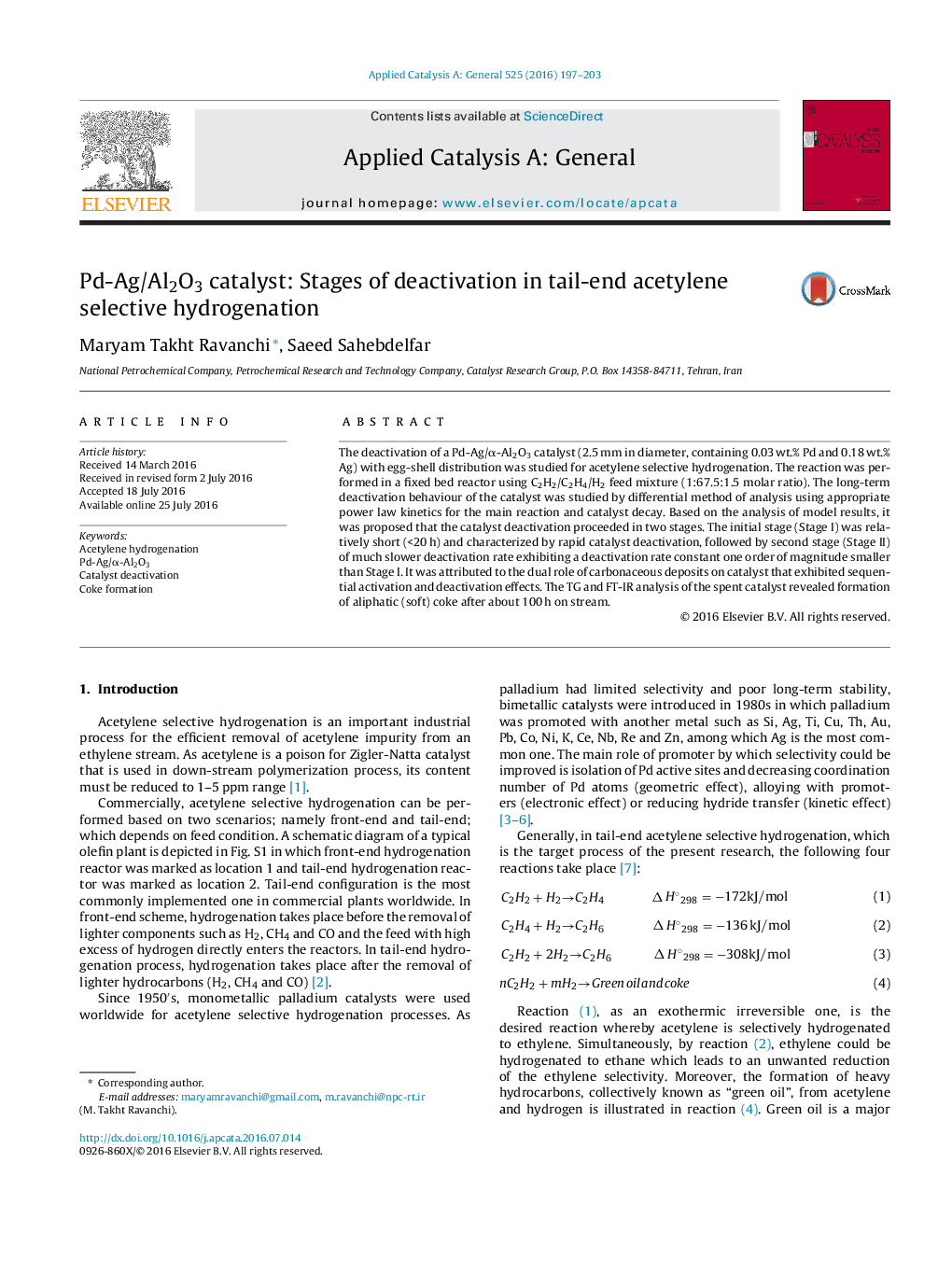| Article ID | Journal | Published Year | Pages | File Type |
|---|---|---|---|---|
| 38690 | Applied Catalysis A: General | 2016 | 7 Pages |
•Differential analysis of acetylene selective hydrogenation data was performed.•Two distinct stages of activity loss was observed in long-term runs.•From Stage I to II, rate constants (k and kd) were decreased one order of magnitude.•Characterization of used catalyst showed formation of soft coke after about 100 h.
The deactivation of a Pd-Ag/α-Al2O3 catalyst (2.5 mm in diameter, containing 0.03 wt.% Pd and 0.18 wt.% Ag) with egg-shell distribution was studied for acetylene selective hydrogenation. The reaction was performed in a fixed bed reactor using C2H2/C2H4/H2 feed mixture (1:67.5:1.5 molar ratio). The long-term deactivation behaviour of the catalyst was studied by differential method of analysis using appropriate power law kinetics for the main reaction and catalyst decay. Based on the analysis of model results, it was proposed that the catalyst deactivation proceeded in two stages. The initial stage (Stage I) was relatively short (<20 h) and characterized by rapid catalyst deactivation, followed by second stage (Stage II) of much slower deactivation rate exhibiting a deactivation rate constant one order of magnitude smaller than Stage I. It was attributed to the dual role of carbonaceous deposits on catalyst that exhibited sequential activation and deactivation effects. The TG and FT-IR analysis of the spent catalyst revealed formation of aliphatic (soft) coke after about 100 h on stream.
Graphical abstractFigure optionsDownload full-size imageDownload high-quality image (76 K)Download as PowerPoint slide
